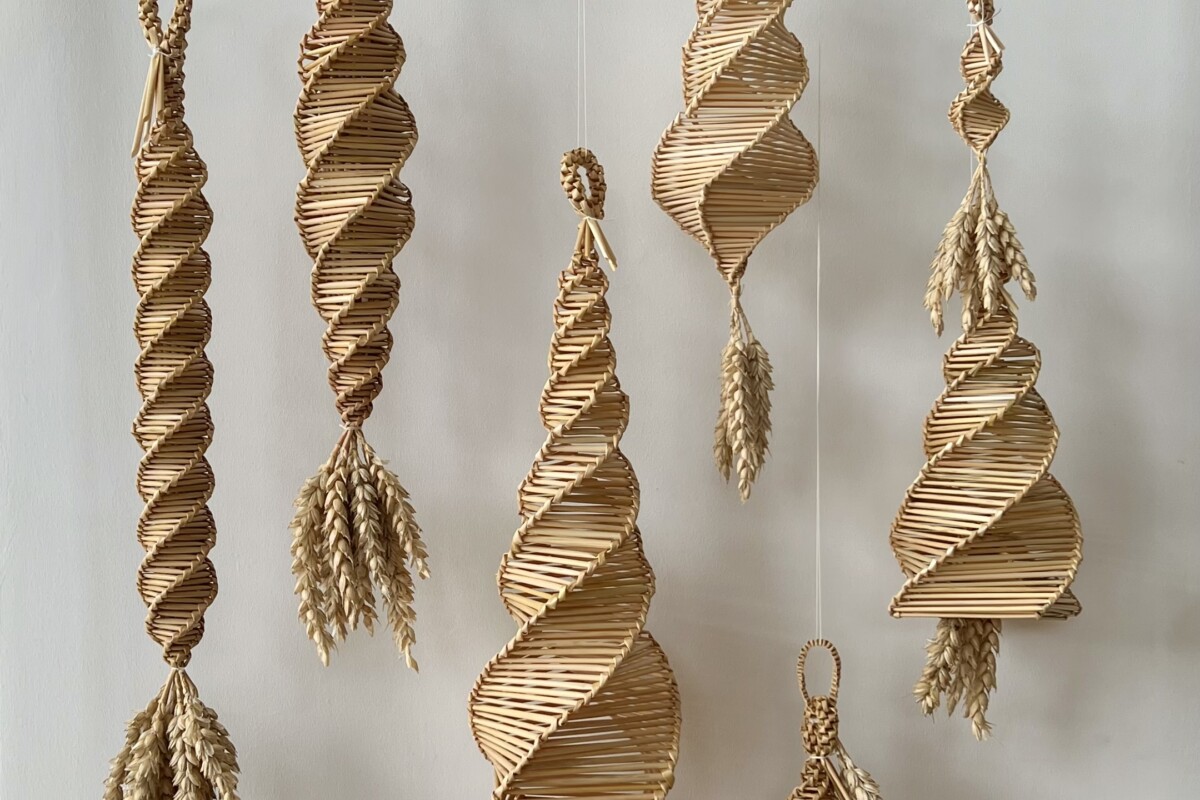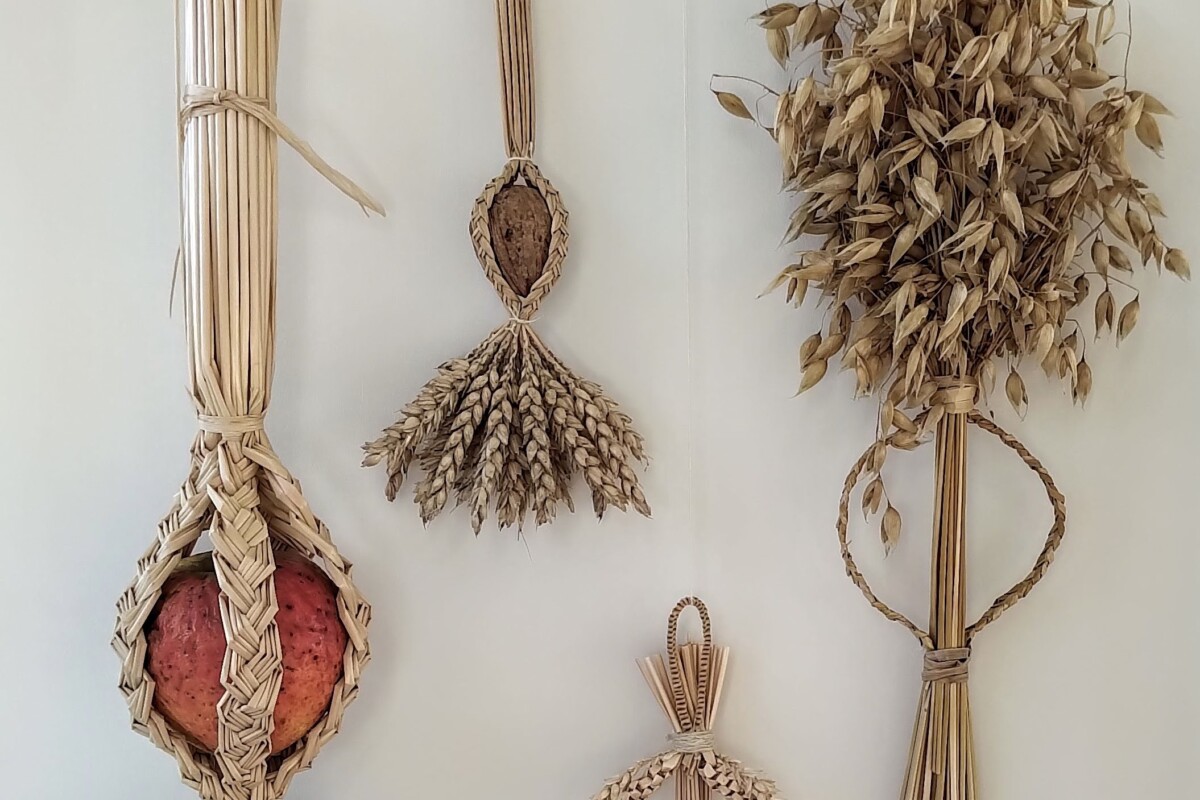What's on
BA Autumn School 2024 – Introduction to Straw Work
By Penny Maltby

Customs and celebrations surrounding the harvest of crops have been celebrated for centuries across the world and are symbols intended to encourage the fertility of crops, preserve the corn spirit so that it would remain active. Corn Dollies are also referred to as Harvest Trophies and Harvest Tokens. Traditionally they would be plaited and made from the last sheaf of the harvest and often plaited in situ. They would be bought from the field, perhaps included as part of the Harvest Supper celebrations or kept in the farm until the following year. Sometimes these may have been burnt or ploughed back into the land. ‘Corn’ is a term for the family of grains which includes barley, oats, wheat and rye. ‘Corn dolly’ is a wide-ranging term which as well as tradtional harvest trophies can also include figures, love tokens, crosses, knots, plaits, Scandinavian star designs, and Far Eastern shrine dolls made from ‘corn’ straw. Designs vary greatly from tradtional ones named after specific areas or people to complex and large ones made up from many types of plaits. Techniques used in the craft include tieing, plaiting, weaving and marquetry. By the twentieth century, corn dollies had largely lost their ritual associations, and from the 1950s there was a concerted effort to preserve the craft of corn dolly making. Along with hatplaiting, corn dolly making is on the red list of endangered crafts.
Over the weekend you will learn about more about the history of straw and its place in our communities and rituals. We will also cover how to prepare and grade it for different uses and applications. This course will give you the basics of straw plaiting and corn dolly work so that you are able to leave with plenty of plaiting techniques and a good understanding of the materials. There will be both heritage wheat and oat straw available to use and your tutor will bring plenty of examples for you to look at.
Suitability: It is suitable for beginners and those with some previous experience who would like to revisit or improve their skill set. The first day will focus on preparation, a variety of plaiting techniques, some short practice exercises for future reference and development as well as the making of some basic harvest knots, trophies and tokens. On the second day under th guidance of your tutor, you will be encouraged to make your own larger piece or pieces using all your new learnt skills.
Materials charge: £15 per person payable to your tutor
There are three £250 bursaries available for the Autumn School. Please click here for more information and to apply online. Please also note that you need to purchase a ticket before you apply
.
Related events
50th Anniversary – Basketry and Tradition with Clare Revera
50th Anniversary – Eddie Glew in conversation with Steen Madsen
50th Anniversary – Red List of Endangered Baskets with Mary Lewis
BA Autumn School 2025 – Willow Shopping Trolley or Log Basket
BA Autumn School 2025 – Garden Fibres and Cordage
BA Autumn School 2025 – Neolithic Weave




